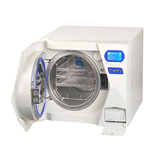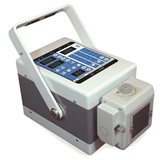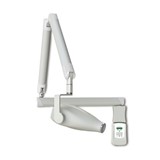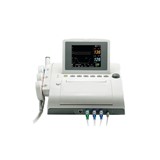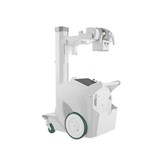Australian buying guide for radiography & fluoroscopy equipment: pricing, maintenance, warranties, financing & ARPANSA compliance. Make smarter purchases.
Key Takeaways:
- Radiography Systems: Prices range from $80,000 to $200,000, depending on the features and system type.
- Fluoroscopy Systems: Can cost between $100,000 and $500,000, with mobile units being more affordable at the lower end of the spectrum.
- System Types: Digital Radiography (DR) systems offer higher image quality and faster results, while traditional X-ray and Fluoroscopy systems are more cost-effective for smaller practices.
- Maintenance: Regular maintenance is crucial, with estimated yearly costs of around $5,000 to $10,000.
- Warranties: Standard warranties last 1-5 years, but extended warranties are available.
- Compliance: Ensure compliance with Australian Radiation Protection and Nuclear Safety Agency (ARPANSA) standards for safe operation.
- Financing: Lease and loan options available for both small and large facilities to manage upfront costs.
Introduction
Radiography and fluoroscopy systems are vital pieces of diagnostic equipment used in medical facilities, including hospitals, clinics, and imaging centres. These systems provide real-time, high-quality images essential for diagnosis and treatment planning. For Australian buyers, selecting the right radiography or fluoroscopy system involves considering various factors such as price, system type, maintenance requirements, compliance with regulations, and available financing options.
This guide will walk you through the different types of radiography and fluoroscopy systems, their prices, key features, operational considerations, maintenance needs, and compliance regulations in Australia. Whether you're opening a new practice or upgrading existing equipment, this comprehensive guide will help you make informed, strategic purchasing decisions.
Types and Prices of Radiography and Fluoroscopy Systems
Radiography Systems
-
Traditional X-ray Systems
- Price Range: $50,000 – $120,000
- Best For: Small to medium-sized medical facilities with basic imaging needs.
- Pros: Lower upfront costs, simpler to operate, familiar technology.
- Cons: Lower image quality compared to digital systems.
-
Digital Radiography (DR) Systems
- Price Range: $100,000 – $200,000
- Best For: Larger hospitals or practices requiring fast, high-quality images.
- Pros: Superior image quality, reduced exposure time, faster workflow.
- Cons: Higher upfront costs.
-
Computed Radiography (CR) Systems
- Price Range: $60,000 – $130,000
- Best For: Medium-sized facilities or those transitioning from film-based systems.
- Pros: Affordable, offers good image quality, relatively simple upgrade path to DR.
- Cons: Slower image processing compared to DR.
Fluoroscopy Systems
-
Fixed Fluoroscopy Systems
- Price Range: $300,000 – $500,000
- Best For: Large hospitals, operating theatres, or clinics performing complex procedures like angiography or gastrointestinal studies.
- Pros: High-quality, real-time imaging with detailed resolution.
- Cons: Expensive, requiring dedicated space.
-
Mobile Fluoroscopy Systems
- Price Range: $100,000 – $250,000
- Best For: Smaller clinics or those requiring flexibility for patient movement.
- Pros: Portable, easier to use in multiple locations.
- Cons: Lower image quality compared to fixed systems.
Radiography and Fluoroscopy System Operations
Both radiography and fluoroscopy systems use X-ray technology, but they differ in how the images are captured and displayed:
- Radiography systems capture static X-ray images, typically used for diagnosing broken bones, lung diseases, and more.
- Fluoroscopy provides real-time X-ray images that are continuously displayed on a monitor, making it ideal for procedures like catheter insertions or monitoring the digestive system.
Key Considerations:
- Image Quality: Higher-end systems like DR radiography and high-end fluoroscopy machines provide better image clarity, essential for accurate diagnostics.
- Speed and Efficiency: DR systems, in particular, offer faster imaging, reducing patient wait times and improving workflow.
Maintenance and Parts
Regular maintenance is crucial for ensuring the longevity and optimal performance of your system. Expect annual maintenance costs of around $5,000 to $10,000, depending on the system’s complexity and usage.
Key Maintenance Needs:
- Regular calibration to maintain image quality and accuracy.
- Checkups on radiation safety features to ensure compliance with regulations.
- Upgrades to software and imaging technology for improved performance.
Common Replacement Parts:
- X-ray tubes: Can cost between $10,000 and $50,000 depending on the system.
- Detectors and sensors for DR systems: Prices can range from $5,000 to $20,000.
- Monitor screens for fluoroscopy systems: Replacement costs range from $1,000 to $5,000.
Financing Options for Radiography and Fluoroscopy Systems
Financing your system can significantly reduce the burden of upfront costs. Various options are available:
-
Leasing:
- Ideal for practices looking to conserve capital while ensuring access to the latest technology.
- Lease terms typically range from 3 to 7 years, with monthly payments depending on the equipment’s cost and lease duration.
-
Equipment Loans:
- Provides ownership after the loan is repaid, with interest rates ranging from 4% to 8%.
- Loan terms vary, typically lasting 5 to 10 years.
-
Government Grants and Subsidies:
- Some Australian states and territories offer grants for medical equipment purchases, though eligibility and funding levels vary.
Warranties and Support
Warranties vary depending on the manufacturer and system type, typically ranging from 1 to 5 years.
- Extended Warranties: Can be purchased for added peace of mind, especially for higher-end systems or systems that are heavily relied upon.
- Technical Support: Ongoing technical support, including troubleshooting and software updates, is generally included in the warranty, but some systems offer premium packages for more frequent support.
Compliance and Certification Considerations
In Australia, radiography and fluoroscopy systems must comply with strict regulations set by the Australian Radiation Protection and Nuclear Safety Agency (ARPANSA) to ensure patient and staff safety. Below is a summary of the key compliance considerations:
Radiation Safety Requirements
- Dose Control: Systems must minimise radiation exposure using features like automatic exposure control (AEC).
- Shielding: Rooms must be shielded with lead-lined walls and other protective barriers.
- Monitoring: Systems should include radiation level monitoring to ensure safe operation.
- Staff Training: Operators must be trained in radiation safety protocols.
Registration and Licensing
- Equipment Registration: All radiographic and fluoroscopic systems must be registered with ARPANSA before use.
- Licensing: Operators and medical facilities must hold radiation licenses, ensuring they are trained and compliant with safety standards.
Compliance Audits
Regular audits ensure ongoing compliance with safety standards:
- Operational Checks: Assess system functionality and calibration.
- Radiation Safety: Verify adherence to safety protocols, including monitoring radiation doses and using protective equipment.
- Staff Competency: Ensure operators are trained in safe equipment use.
- Documentation: Facilities must maintain records of safety checks, training, and equipment maintenance.
Key Regulatory Standards
- ARPANSA Radiation Protection Series No. 6 (RPS 6)
- Provides guidelines for the safe operation and maintenance of diagnostic radiology equipment.
- Focuses on radiation dose limits, image quality, and operator training.
- AS 3552 – Australian Standard for Fluoroscopic and Radiographic Equipment
- Details safety requirements for radiographic and fluoroscopic equipment, covering performance, installation, and maintenance.
State and Territory Regulations
Each Australian state and territory enforces radiation safety standards and conducts inspections:
- Non-compliance can lead to fines or equipment shutdowns.
- State-based bodies like the Radiation Advisory Council (RAC) in New South Wales and the Radiation Safety Act 1999 in Victoria ensure enforcement.
To operate safely, radiography and fluoroscopy systems must meet ARPANSA's stringent radiation safety standards. Proper registration, licensing, regular audits, and adherence to guidelines like RPS 6 and AS 3552 are essential for ensuring patient and staff safety. Compliance with these regulations protects your facility from penalties and supports high-quality diagnostic practices.
Common Questions About Radiography and Fluoroscopy Systems
1. How long do radiography and fluoroscopy systems last?
- Typically, a system will last between 10 to 15 years with proper maintenance, although individual components like the X-ray tube may need replacing sooner.
2. How much space is required for a fluoroscopy system?
- Fixed fluoroscopy systems require a dedicated room, typically with a floor space of at least 5x5 meters. Mobile units require less space but need sufficient room for manoeuvring.
3. Can I upgrade my existing system to digital radiography?
- Yes, many systems can be upgraded to DR with a digital retrofit kit, though it can be a significant investment depending on the system.
4. What are the ongoing costs of operating these systems?
- Ongoing costs include maintenance, consumables (e.g., X-ray film or detectors), and staff training, typically amounting to $5,000 – $15,000 per year, depending on usage.
Conclusion
Choosing the right radiography and fluoroscopy system in Australia is a significant investment, requiring careful consideration of system types, prices, maintenance, and regulatory compliance. By understanding the various systems available, their operational needs, financing options, and warranties, you can make an informed decision that aligns with both your facility's budget and diagnostic needs. Whether opting for a traditional X-ray system or a cutting-edge fluoroscopy solution, investing in high-quality equipment ensures better patient outcomes and improved operational efficiency.







-160x160-state_article-rel-cat.png)



